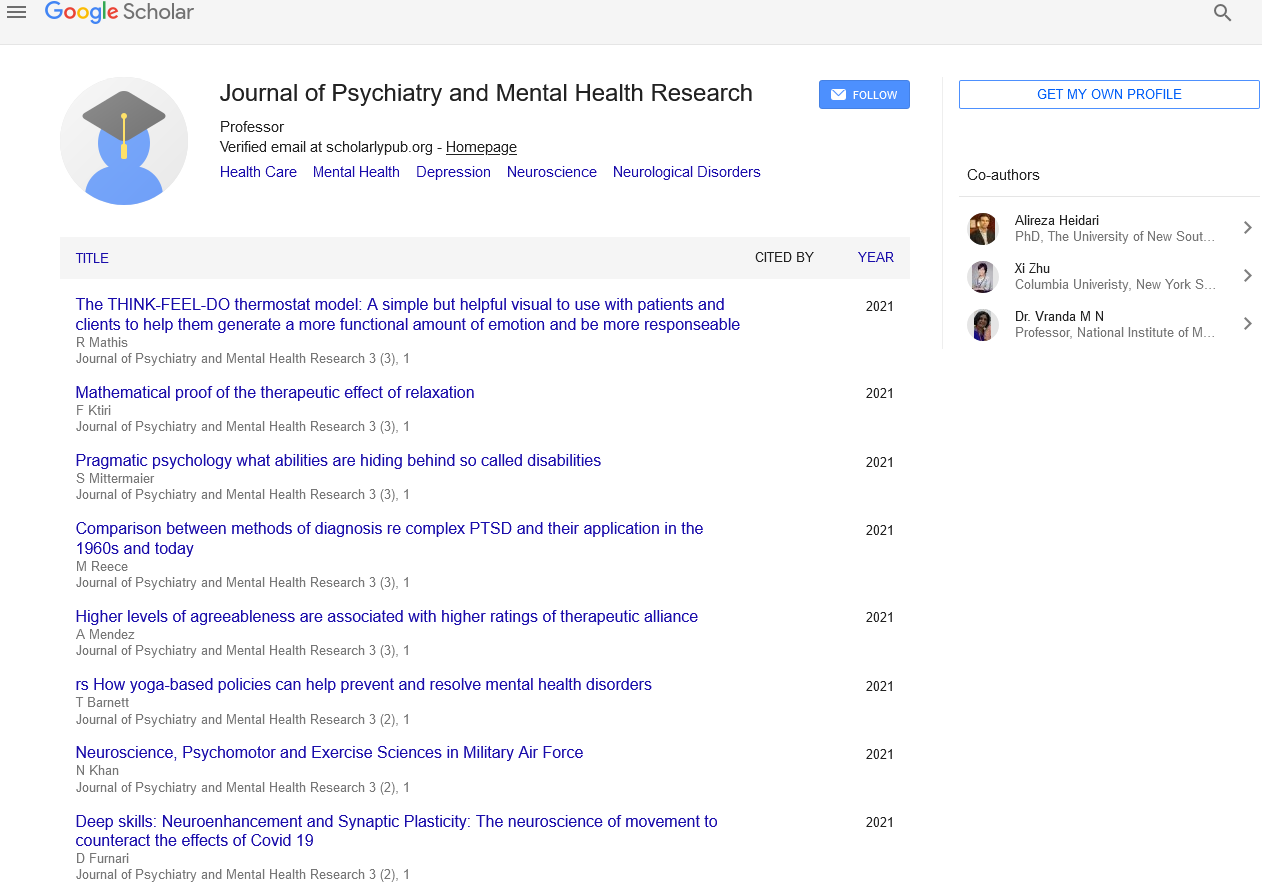young children are less likely to show distress but instead may express their memories through play
Received: 03-Jan-2024 Editor assigned: 05-Jan-2024 Accepted Date: Jan 14, 2024; Reviewed: 09-Jan-2024 Revised: 10-Jan-2024 Published: 23-Jan-2024
This open-access article is distributed under the terms of the Creative Commons Attribution Non-Commercial License (CC BY-NC) (http://creativecommons.org/licenses/by-nc/4.0/), which permits reuse, distribution and reproduction of the article, provided that the original work is properly cited and the reuse is restricted to noncommercial purposes. For commercial reuse, contact reprints@pulsus.com
Editorial Note
Post-traumatic stress disorder (PTSD) is a mental and behavioral disorder that can develop because of exposure to a traumatic event, such as sexual assault, warfare, traffic collisions, child abuse, domestic violence, or other threats on a person's life. Symptoms may include disturbing thoughts, feelings, or dreams related to the events, mental or physical distress to trauma-related cues, attempts to avoid trauma-related cues, alterations in the way a person thinks and feels, and an increase in the fight-or-flight response. A person with PTSD is at a higher risk of suicide and intentional self-harm. Most people who experience traumatic events do not develop PTSD. People who experience interpersonal violence such as rape, other sexual assaults, being kidnapped, stalking, physical abuse by an intimate partner, and incest or other forms of childhood sexual abuse are more likely to develop PTSD than those who experience non-assault based trauma, such as accidents and natural disasters. Those who experience prolonged trauma, such as slavery, concentration camps, or chronic domestic abuse, may develop complex posttraumatic stress disorder (C-PTSD). C-PTSD is similar to PTSD but has a distinct effect on a person's emotional regulation and core identity.
Prevention may be possible when counselling is targeted at those with early symptoms but is not effective when provided to all trauma-exposed individuals whether or not symptoms are present. The main treatments for people with PTSD are counselling (psychotherapy) and medication. Antidepressants of the SSRI or SNRI type are the first-line medications used for PTSD and are moderately beneficial for about half of people. Benefits from medication are less than those seen with counseling. It is not known whether using medications and counselling together has greater benefit than either method separately. Medications, other than some SSRIs or SNRIs, do not have enough evidence to support their use and, in the case of benzodiazepines, may worsen outcomes.
Symptoms
Symptoms of PTSD generally begin within the first three months after the inciting traumatic event, but may not begin until years later. In the typical case, the individual with PTSD persistently avoids either trauma-related thoughts and emotions or discussion of the traumatic event and may even have amnesia of the event. However, the event is commonly relived by the individual through intrusive, recurrent recollections, dissociative episodes of reliving the trauma. While it is common to have symptoms after any traumatic event, these must persist to a sufficient degree (i.e., causing dysfunction in life or clinical levels of distress) for longer than one month after the trauma to be classified as PTSD (clinically significant dysfunction or distress for less than one month after the trauma may be acute stress disorder) Some following a traumatic event experience post-traumatic growth. Trauma survivors often develop depression, anxiety disorders, and mood disorders in addition to PTSD. Substance use disorder, such as alcohol use disorder, commonly co-occur with PTSD. Recovery from posttraumatic stress disorder or other anxiety disorders may be hindered, or the condition worsened, when substance use disorders are comorbid with PTSD. Resolving these problems can bring about improvement in an individual's mental health status and anxiety levels. In children and adolescents, there is a strong association between emotional regulation difficulties (e.g. mood swings, anger outbursts, temper tantrums) and posttraumatic stress symptoms, independent of age, gender, or type of trauma.





